
Red Bull RB20: why changing a winning car so much?
(Cover picture: Oracle Red Bull Racing)
This time Adrian Newey and his colleagues at Red Bull made it really big... At the presentation of the RB20 no one would have expected such a huge upheaval compared to last year's RB19, which has been the most successful (and dominant) car in the history of Formula 1. Yet it's exactly what we saw when the new car from the Milton Keynes team was revealed to the world: technical solutions not only divergent from the stylistic features that we had appreciated until a few months ago, but also inspired from attempts made - and failed - in the last two years by Mercedes.
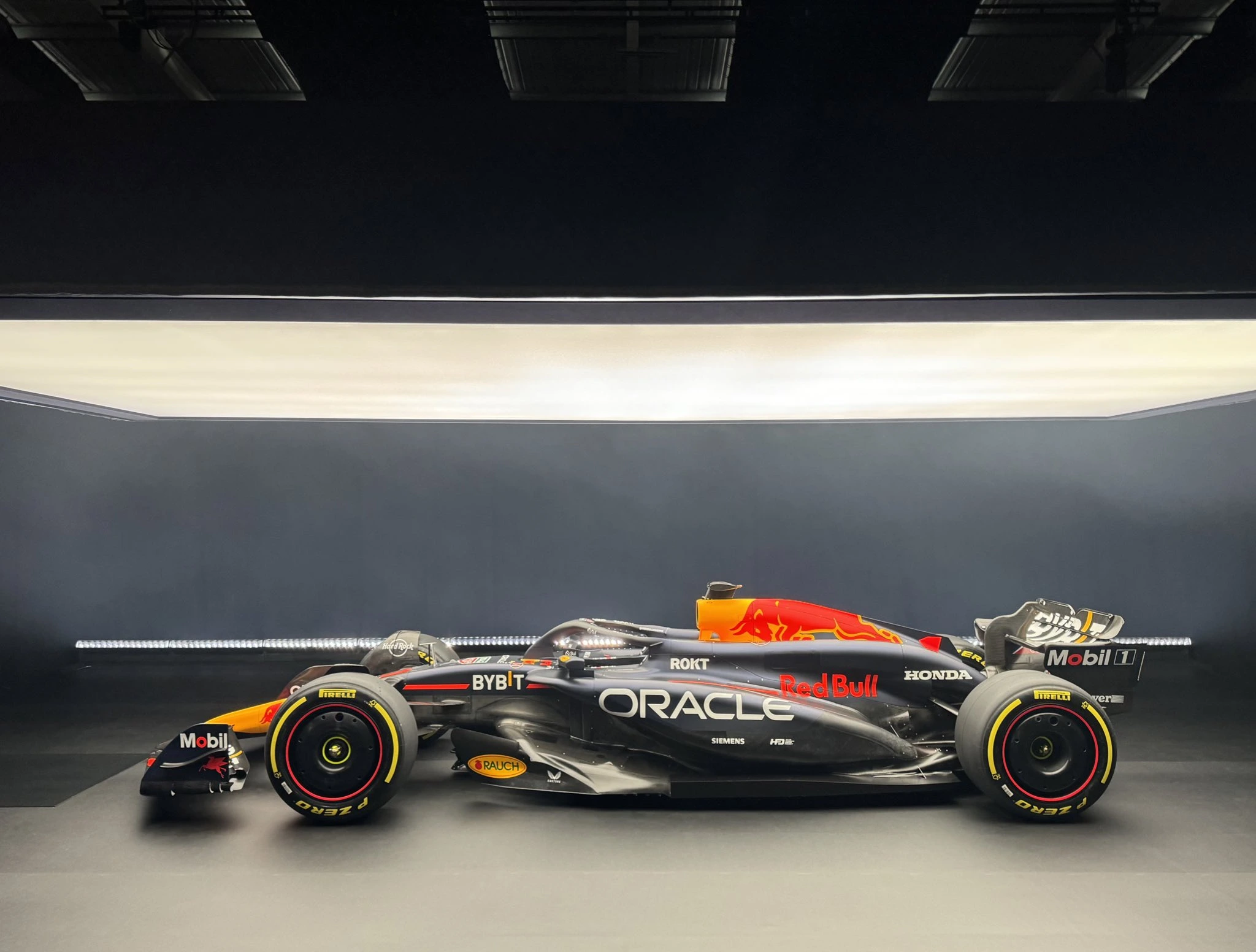
Side view of the new Red Bull RB20
It almost seems that the Red Bull engineers, aware of their skills and their working method, wanted to show off this confidence in front of their historic rivals from Mercedes, trying to make a car concept work which, in the case of Toto Wolff's team, never "took off" either under the technical guidance of Mike Elliott, nor following the return of James Allison.
So let's start our technical analysis with an important disclaimer: over the years Red Bull accustomed us to bringing very different cars to the track from what was shown at the presentation; furthermore, as you will see, the photos published on the evening of Thursday 15 February are (deliberately) few and from "strategic" angles... In short, we're certainly not going to Bahrain 100% aware of how the RB20 will be made, but we can start to discuss some of its design areas.
Long (modular?) nosecone and pull-rod suspension: the front end is the area that has changed the least
At the front, the most important change concerns the nosecone: if since the dawn of the regulatory revolution in 2022 Red Bull had produced racecars with a nosecone connected to the first flap, this year they opted for a long and flat solution that connects directly to the mainplane. A reversed trend compared to what was done, for example, by Ferrari.
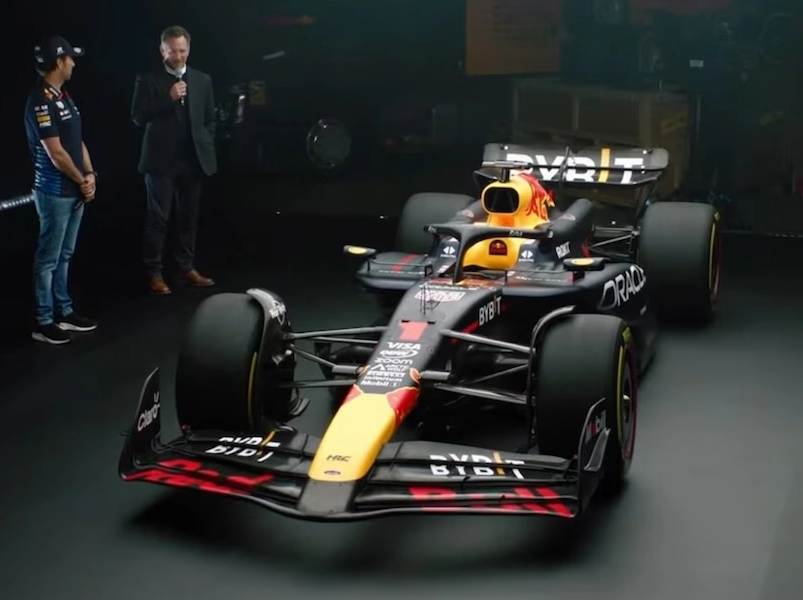
Front view of the new Red Bull RB20
As can be seen from the photo above, however, in the final portion of the nosecone (the one left in carbon black, so to speak) there is a small compartment - as evidenced by the four screws that keep it fixed. An apparently insignificant detail and at first glance explainable as a place for ballast (it would really be a nice area to do so), but which could also suggest a modularity of the entire nosecone.
If this were true, it would mean that the abovementioned element isn't structural, and therefore if necessary it could be decided to eliminate it to switch to a better known configuration, with the attachment to the first flap instead of the mainplane. Let's remember, in this regard, that Red Bull had failed the first crash test attempt on the front of its RB20: in my opinion this is another clue in favour of this hypothesis of modularity...
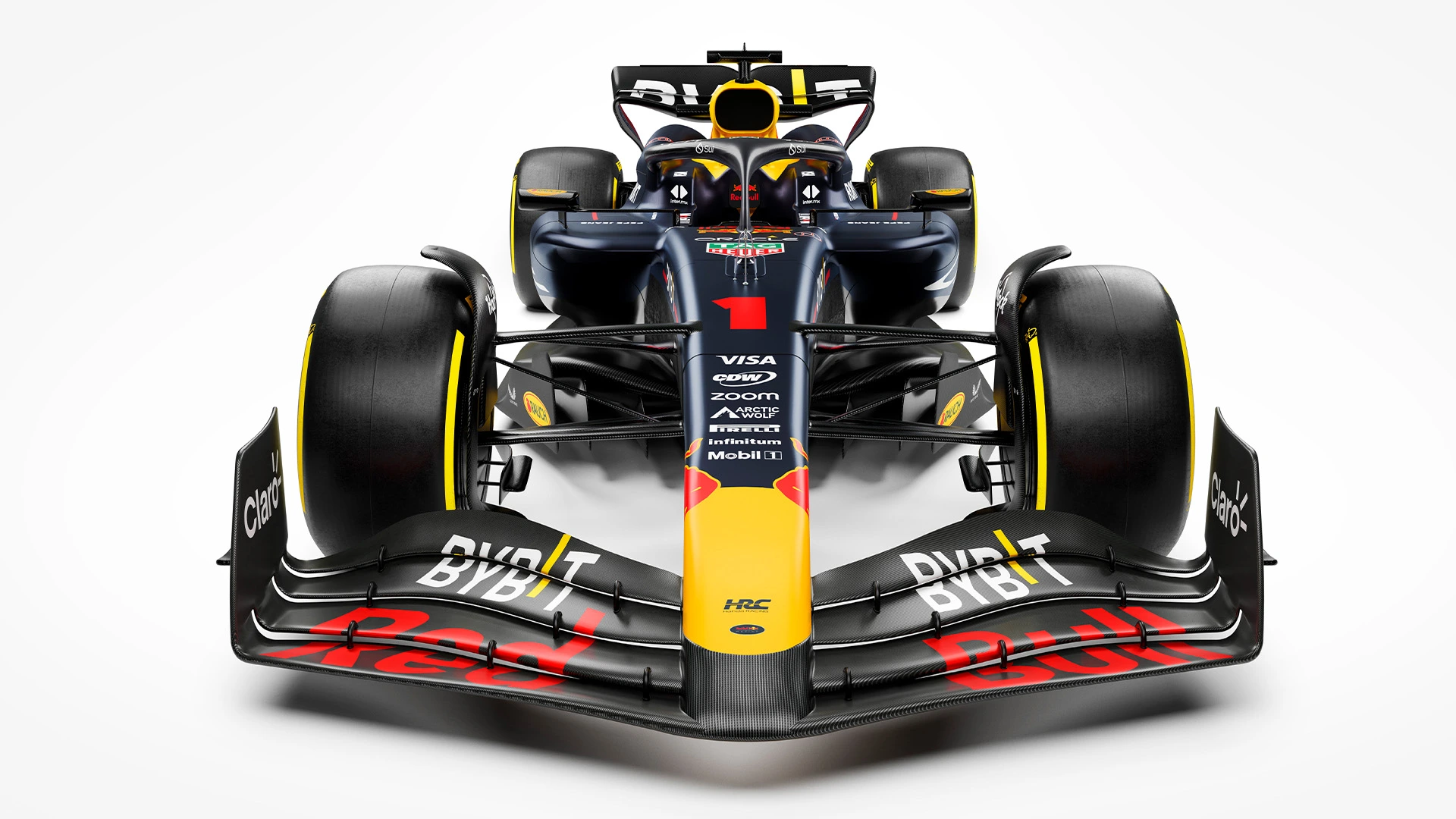
Front view of the new Red Bull RB20 (photo: Oracle Red Bull Racing)
Having no significant differences to report on the rest of the front wing, but always with an eye on what will be brought to the tests in Bahrain in a few days, let's discuss about the front suspension. A pull-rod type suspension which from the a geometrical point of view set a precedent last year, and which has been proposed once again in a completely similar version on Verstappen and Perez' new car. It's rumored that the anti-dive characteristic has been increased a little more compared to the RB19, but in the absence of comparative photos taken from appropriate angles it's impossible to tell. Of course, we know that the stabilization of the aerodynamic platform is an area on which few can teach Adrian Newey & Co. something.
The mistery of the hidden sidepods, and a middle area in full Mercedes style
Starting from the cockpit and up to the rear wing, the Red Bull RB20 is a bundle of innovations: some never seen before in Formula 1, others taken and revised - as mentioned at the beginning - from Mercedes. Certain areas, on the other hand, are difficult to delve into, as Red Bull itself has artfully released different photos on its social media channels and website: for this reason everyone's wondering, for example, what do the sidepods of this single-seater really look like...
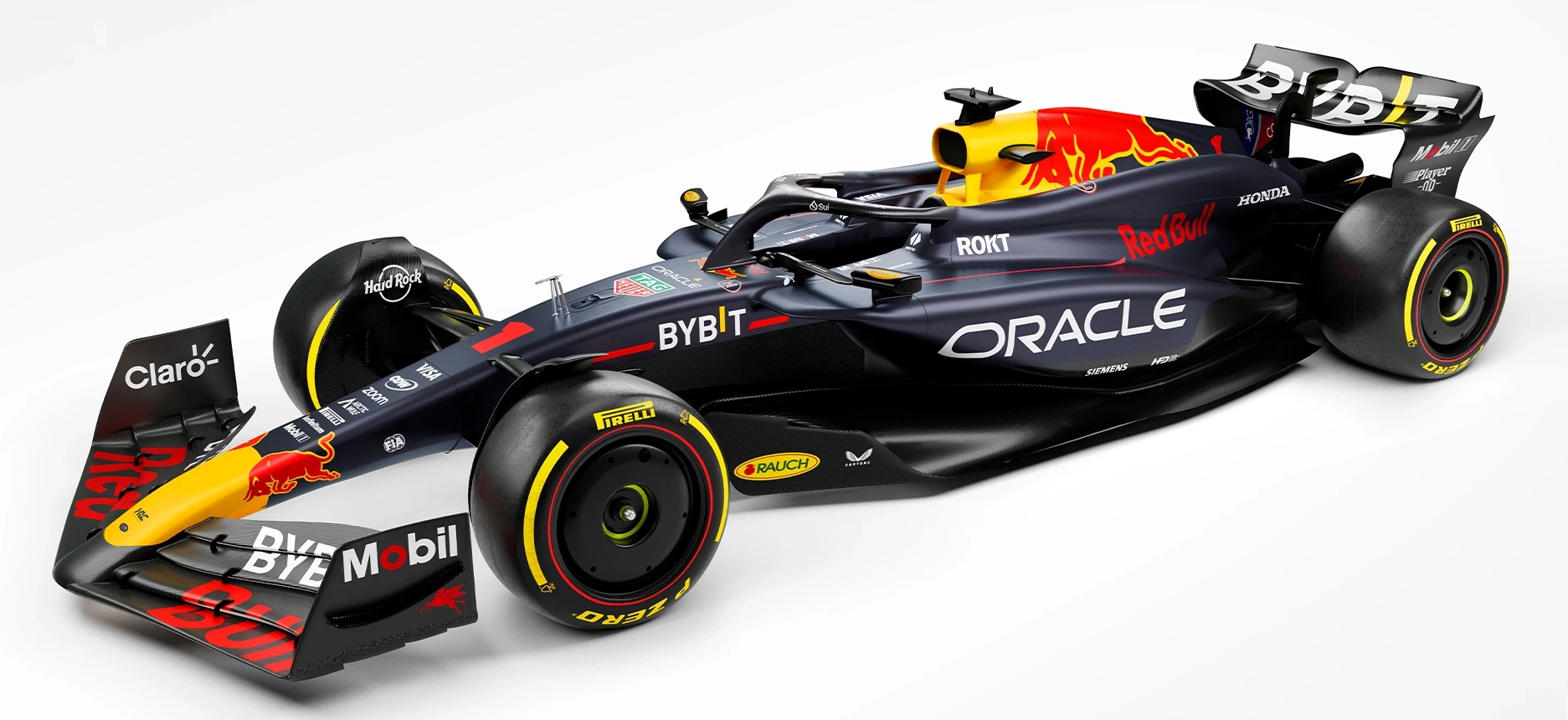
Three-quarter view of the new Red Bull RB20 (photo: Oracle Red Bull Racing)
From the photo above, in fact, you can't really tell anything, except that the undercuts of the RB20 are - more than impressive - neverending. To be honest, apparently it seems that there aren't even any sidepod inlets, and that the entire volume on the sides of the driver is dedicated to directing the airflow towards the channels that lead to the diffuser. The only consistent element in all the photos observed is the long "lip" below the mirror housings, whereas on the RB19 its length was the minimum allowed by the Technical Regulations.
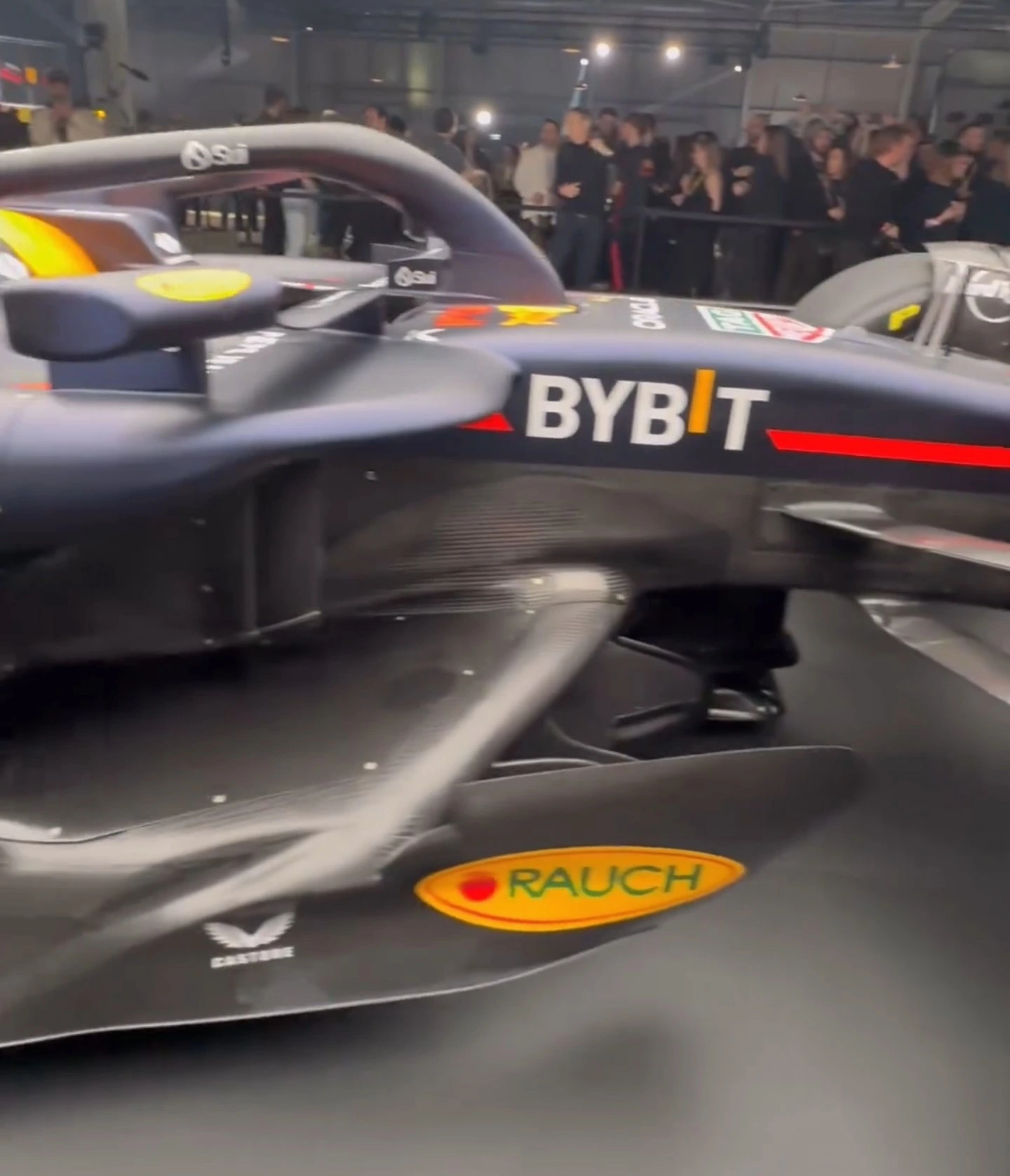
Vertical slot on the RB20: sidepod inlet or Ferrari-style by-pass duct?
However, if we take into consideration the frame above, taken from the same presentation event, we can observe clearly the presence of a vertical opening. There are two hypotheses among fans and experts regarding the function of this element:
- The opening could be the sidepod inlet, mimicking what was done at the beginning of 2022 on the Mercedes W13 (but without giving up the undercuts' importance);
- The opening could represent the inlet of a "by-pass duct", a duct already seen on the Ferrari SF-23 and SF-24 which collects the boundary layer before the sidepods and then channels it above them; in this case, the sidepod inlet would be horizontal and placed below the very extended "lip" that we can see in all the photos;
What makes some lean towards the second hypothesis is the presence - in the last few hours - on the team's website of an augmented reality section in which are shown more conventional horizontal openings compared to the (vertical) ones we observed in the photo above. My personal opinion in this regard is that these openings would be too small and poorly positioned to perform the sidepods inlet function: the lip we discussed, rather than an invitation to the airflow to enter into the radiators, would be a "wall" which - ultimately - would reduce the Power Unit cooling capacity.
I therefore think that the correct hypothesis is the first, also taking into account the fact that not even the vertical positioning of the sidepod inlets is optimal, as the air sucked from there would arrive after having touched the entire lateral walls of the nosecone: when a flow is close to a solid wall, as we know, we can talk about a "boundary layer"; without dwelling on the fluid dynamic characteristics of the boundary layer, it's enough to know that its speed (and its energy content) is lower, precisely because it has been "worked" by the solid surface with which it's in contact. In short, not the best possible quality air flow to be supplied to the radiators. But if this penalty means having a lot more space to create undercuts like those seen, I really believe that the Red Bull engineers didn't miss an opportunity of this kind...
Before moving on to talk about the last important news on this racecar, let's conclude the sidepods chapter with an rumour leaked in the last few hours, according to which the Milton Keynes team already has a transition to a "size-zero" sidepods concept in its update program, just like the ones that drove the Mercedes engineers crazy on the W13 in 2022!
This important step should take place at the beginning of April on the occasion of the Japanese Grand Prix, which starting this year is placed much earlier than usual on the calendar (for understandable logistical reasons). In general, a trick also used last year by Red Bull to maximize the testing possibility in the wind tunnel and with CFD is to focus a lot on the cooling side, since the latter is framed differently from the rest of the car development in the context of restrictions on aerodynamic testing. In fact, exceptions areprovided for "wind tunnel tests exclusively for the development of heat exchangers of the Power Unit which reject heat into the air, or for the operation of the Power Unit from a boundary starting from the air intake ducts of the internal combustion engine (ICE)".
If the rumours were verified, I wouldn't be surprised if the Red Bull engineers had used this trick once again...
Engine cover also inspired by Mercedes: will the aerodynamic stall at the rear end be seen once again?
At the rear, in the absence of other information or details (the push-rod rear suspension appears to be identical to that of the RB19), let's discuss about to the elephant in the room: the shapes of the engine cover, inspired - not even vaguely - by the Mercedes W14 of last year.
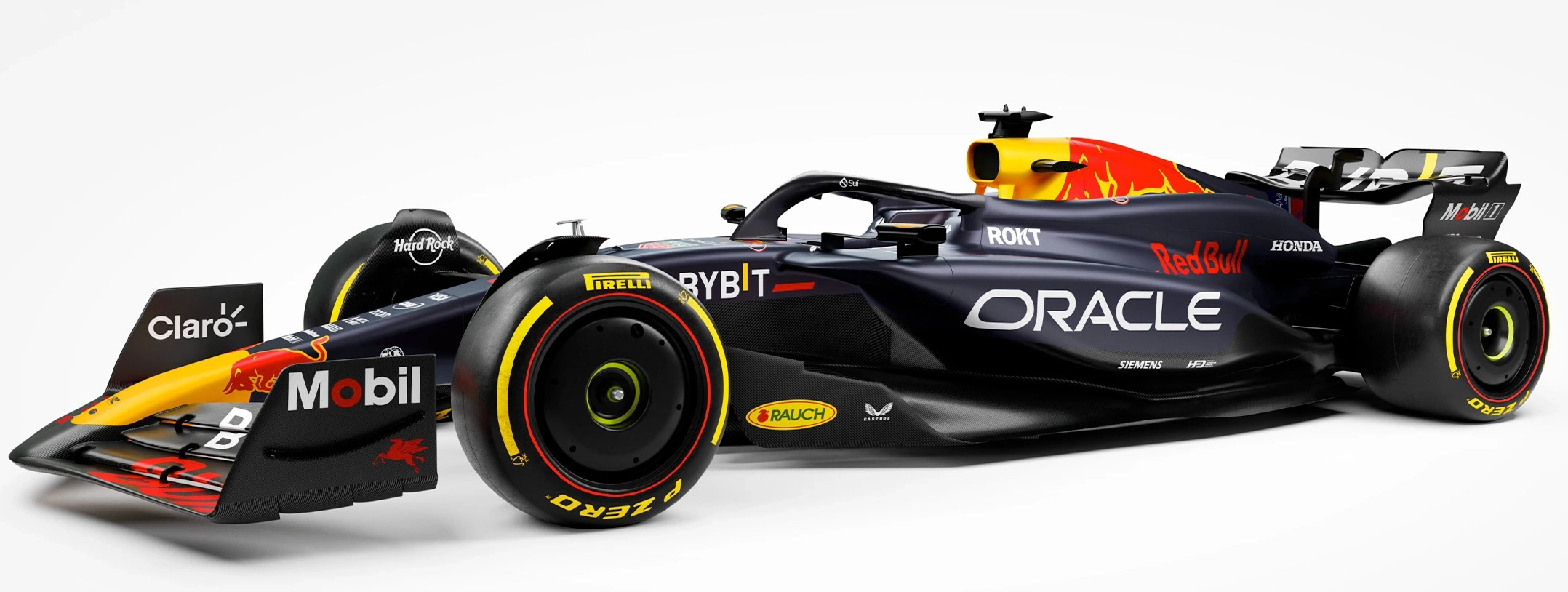
Side view of the new Red Bull RB20 (photo: Oracle Red Bull Racing)
As you can see, on both sides of the engine cover there are two bulges that extend from the halo right to the outlet of the engine cover itself. The similarity with what the Mercedes rivals did in 2023 is impressive, and the only difference with the solution implemented by the latter lies in the downward trend of the two bulges in their final portion. The hypothesis to explain this trend lies in the fact that at the rear end it's vital to correctly feed the rear wing - beam wing - diffuser assembly, making these three elements work with pressure gradients which, if necessary, can even cause a controlled aerodynamic stall.
Most likely, here lies the secret that made the RB19 so fast in the straight lines, especially when the DRS flap was open: it will be interesting to see if with this new geometry, which in 2023 was there to an extremely lesser extent - and which in my opinion will be definitive in view of the first races of the year - the RB20 will be able to replicate the phenomenon described.
"Resources are limited, unfortunately we can't do everything. We have chosen to develop what we have, but we don't know if it will be the right choice or if it will be too conservative compared to what others have done"
Adrian Newey
The prospects ahead of the Bahrain tests for the English-Austrian team
When a team comes from the most successful season not only in its history but in that of the entire Formula 1, it's easy to think that the minimum target will be to win both the Drivers' and Constructors' World Championships once again.
Obviously Red Bull's goal will be precisely this, and it's equally true that - starting from the dominance shown on track - they start as outright favourites: even after having upset large areas of their single-seater, I personally believe that the only potential critical issue in the perfect mechanism that the Milton Keynes team has been in recent years can be the situation linked to their Team Principal Christian Horner, on which I won't comment until clearer information in this regard.
Until then, the cars will be on track for the Bahrain testing from 21 to 23 February, every day from 8.00 to 17.00 CET. Will these testings mark the continuation of Red Bull's dominance?
Index
Red Bull RB20: why changing a winning car so much?
- Long (modular?) nosecone and pull-rod suspension: the front end is the area that has changed the least
- The mistery of the hidden sidepods, and a middle area in full Mercedes style
- Engine cover also inspired by Mercedes: will the aerodynamic stall at the rear end be seen once again?
- The prospects ahead of the Bahrain tests for the English-Austrian team